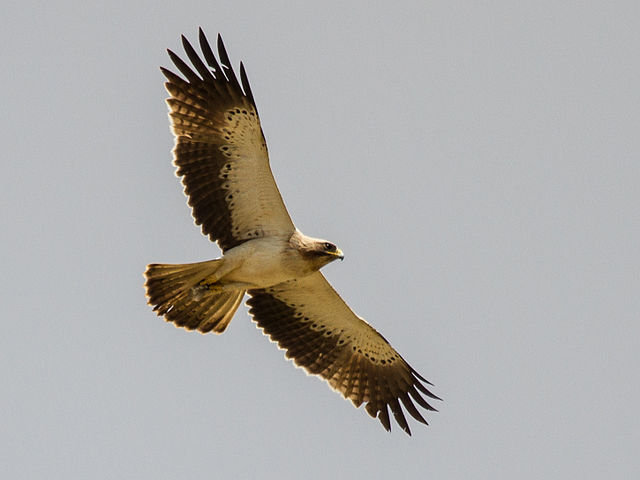profile/9044FB_IMG_16073547515410362.jpg
Blessed102020

THE EAGLE
~21.9 mins read
Eagle is the common name for many large birds of prey of the family Accipitridae. Eagles belong to several groups of genera, some of which are closely related. Most of the 60 species of eagle are from Eurasia and Africa. Outside this area, just species can be found—2 in North America, 9 in Central and South America, and 3 in Australia. It is nicknamed the king of all birds. Booted eagle, in flight.
Booted eagle, in flight.Subfamily Circaetinae. Genera: Circaetus, Spilornis,Dryotriorchis, Terathopius. Eutriorchis (subfamily Gypaetinae or Circaetinae). Harpy eagles (proposed subfamily Harpiinae) Harpia harpyja, harpy eagle ― Central and South America. Morphnus guianensis, crested eagle ― Central and South America. Harpyopsis novaeguineae, Papuan eagle ― New Guinea. Philippine eagle Pithecophaga jefferyi, Philippine eagle ― Philippines. Solitary eagles Chaco eagle or crowned solitary eagle,Buteogallus (formerly Harpyhaliaetus) coronatus ― South America. Solitary eagle or montane solitary eagle,Buteogallus (formerly Harpyhaliaetus) solitarius ― South America.
Eagles normally build their nests, called eyries, in tall trees or on high cliffs. Many species lay two eggs, but the older, larger chick frequently kills its younger sibling once it has hatched. The dominant chick tends to be a female, as they are bigger than the male. The parents take no action to stop the killing.
Due to the size and power of many eagle species, they are ranked at the top of the food chain as apex predatorsin the avian world. The type of prey varies by genus. TheHaliaeetus and Ichthyophaga eagles prefer to capture fish, though the species in the former often capture various animals, especially other water birds, and are powerful kleptoparasites of other birds. The snake and serpent eagles of the genera Circaetus, Terathopius, andSpilornis predominantly prey on the great diversity ofsnakes found in the tropics of Africa and Asia. The eagles of the genus Aquila are often the top birds of prey in open habitats, taking almost any medium-sizedvertebrate they can catch. Where Aquila eagles are absent, other eagles, such as the buteonine black-chested buzzard-eagle of South America, may assume the position of top raptorial predator in open areas. Many other eagles, including the species-rich genus Spizaetus, live predominantly in woodlands and forest. These eagles often target various arboreal or ground-dwelling mammals and birds, which are often unsuspectingly ambushed in such dense, knotty environments. Hunting techniques differ among the species and genera, with some individual eagles having engaged in quite varied techniques based their environment and prey at any given time. Most eagles grab prey without landing and take flight with it, so the prey can be carried to a perch and torn apart.
Groups
The snake eagles are placed in the subfamily Circaetinae. The fish eagles, booted eagles, and harpy eagles have traditionally been placed in the subfamily Buteoninae together with the buzzard-hawks (buteonine hawks) and harriers. Some authors may treat these groups as tribes of the Buteoninae; Lerner & Mindellproposed separating the eagle groups into their own subfamilies of Accipitridae.
Fish eagles
Sea eagles or fish eagles take fish as a large part of their diets, either fresh or as carrion.
Proposed subfamily Haliaeetinae. Genera: Haliaeetus, Ichthyophaga.
Some authors include Gypohierax angolensis, the "vulturine fish eagle" (also called the palm-nut vulture) in this group. However, genetic analyses indicate it is related to a grouping of Neophron–Gypaetus–Eutriorchis(Egyptian vulture, bearded vulture (lammergeier), and Madagascan serpent eagle).
The fish eagles have a close genetic relationship with Haliastur and Milvus; the whole group is only distantly related to the Buteo group.
Booted eagles
 Booted eagle, in flight.
Booted eagle, in flight.Tribe Aquililae or proposed subfamily Aquilinae. Genera: Aquila, Hieraaetus; Spizaetus, Oroaetus, Spizastur; Nisaetus; Ictinaetus, Lophoaetus; Polemaetus; and Stephanoaetus.
Snake eagles
Snake or serpent eagles are, as the name suggests, adapted to hunting reptiles.
Despite filling the niche of a snake eagle, genetic studies suggest that the Madagascan serpent eagle Eutriorchisis not related.
Harpy eagles
Harpy eagles or "giant forest eagles" are large eagles that inhabit tropical forests. The group contains two to six species, depending on the author. Although these birds occupy similar niches, and have traditionally been grouped together, they are not all related: the solitary eagles are related to the black-hawks, and the Philippine eagle to the snake eagles.
Advertisement

Link socials
Matches
Loading...
